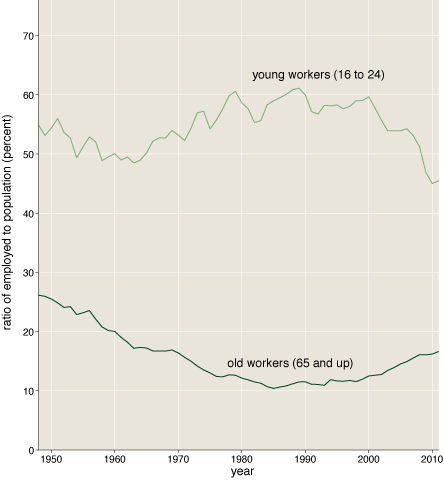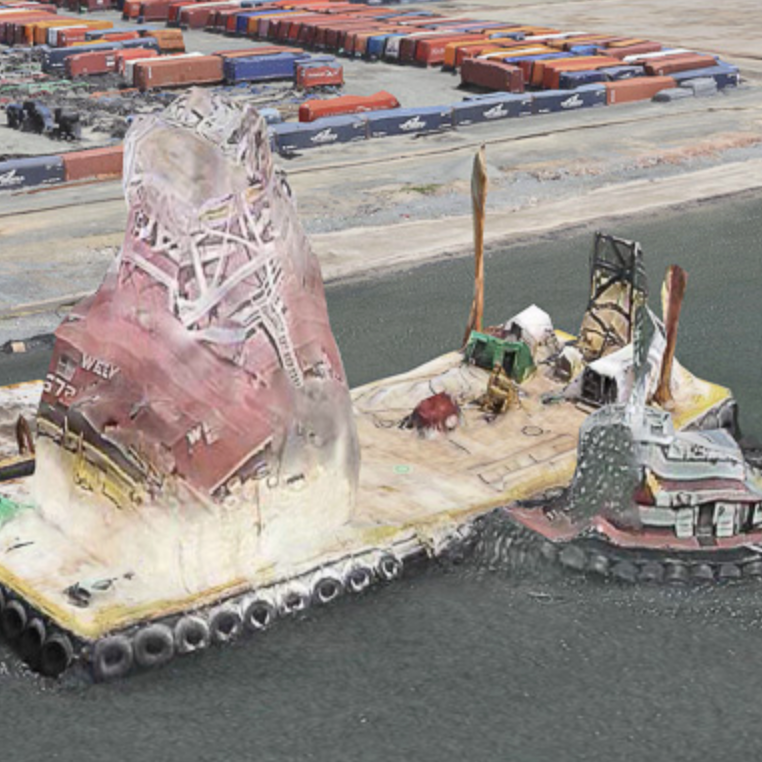Driving the Dreamboat
by Brian Hayes
Published 17 August 2011

Slide behind the wheel of this dreamboat. Push the electronic control button. Then sit back and let transistors take over.
There’s something curiously tentative about this vision of the future of motoring, as seen from 1964. You’re invited to push the button and let the transistors take over. But you’ve still got your hands on the wheel; apparently you’re still responsible for driving the dreamboat.
Other early discussions of automatic automobiles are also fuzzy about exactly who or what is in charge. A notable example is the General Motors Futurama exhibit at the 1939 Worlds Fair in New York. “Safe distance between cars is maintained by automatic radio control,” intones the narrator, above creepy organ music. This certainly suggests something other than seat-of-the-pants driving. But the next sentence narrows the scope of that automatic control: “Curved sides assist the driver in keeping his car within the proper lane under all circumstances.” Thus the technology is merely assistive, not autonomous. And what’s that about “curved sides”? Norman Bel Geddes, the designer of the exhibit, explains all in Magic Motorways, published in 1940. It’s very low-tech. Freeway lanes are to be separated by high curbs of concave cross-section, which deflect a straying car back into its lane. (Later in the book Bel Geddes also discusses more elaborate guidance systems, involving buried conductors.)
The reprise of Futurama at the 1964 World’s Fair—an exhibit that I attended, along with 29 million other people—was even vaguer about the question of autonomous vehicles. We saw lots of miniature automobiles moving in close order along gleaming freeways, and personally I came away with the impression that all those vehicles were under computer control. But the transcript of the narration includes only a single sentence on the topic, and it’s open to almost any interpretation: “Vehicles electronically paced, travel routes remarkably safe, swift and efficient.”
Why so coy about the prospect of cars that would drive themselves without human intervention? Maybe the concept was just too outlandish for credibility, particularly in 1939. Or maybe GM recognized that their natural audience is made up of car enthusiasts, who want to drive their dreamboats, not just be carried along as electronically paced, radio-controlled passengers.
In any case, the coyness has now evaporated, and these days everybody is talking about truly autonomous vehicles. DARPA runs contests for them; an Italian group has driven them across Europe and Asia; Google has a “secret” fleet of them. And I too am talking about autonomous vehicles: “Leave the Driving to It” is my latest American Scientist column.
Note: The artwork above is from an RCA advertisement in the September 1964 issue of Scientific American. Stylistically, the painting owes something to the Futurama exhibits, but I’d like to make a wild guess that the (uncredited) artist who created this rendering lived in Minneapolis. That brightly lighted, colonnaded building to the right of center looks to me very much like a building at Hennepin and Washington (now owned by ING) that was completed in 1964, just as this ad appeared. The architect was Minoru Yamasaki, the designer of the World Trade Center.
Responses from readers:
Please note: The bit-player website is no longer equipped to accept and publish comments from readers, but the author is still eager to hear from you. Send comments, criticism, compliments, or corrections to brian@bit-player.org.
Publication history
First publication: 17 August 2011
Converted to Eleventy framework: 22 April 2025




I was going to point out that the building NEXT to the ING building looks a lot like the IDS tower (in downtown Minneapolis), but apparently that wasn’t built until 1974. So maybe we have life imitating art in Minneapolis.
“So maybe we have life imitating art in Minneapolis.”
Or else the artist had a very clear vision of the future.
The tiered cylindrical building rising above the freeway on the left looks a bit like the Marina Towers in Chicago, also built in 1964.
My take is that this is an automatic highway. On the surface streets, you drive the car yourself; when you get on the highway, you can hit the button any time and then (but not before) let go of the wheel.
As for the cityscape, the only thing I guarantee is that it’s not New York.
I read the article in American Scientist. The future looks promising, but there may be one large difficulty: the scenarios seem to imply an after-the-fact state of affairs. There will most likely have to be a long transitional period (while we get rid of all those icky nasty old “dumb cars”).
Do you see the possibility of both kinds of cars on the road?
It’s possible that trucks might go first (to the dismay of truckers). They could take good advantage of the convoy method.
(Drive out any freeway about 100 miles one way, then back. You’ll pass at least 10 or 15 trucks going the other way, every hour, day or night. )
It’s also possible that a computer-controlled truck could have 4 or 5 trailers, with stopoffs along the way where trailers could be changed from one truck to another.
There’s little doubt that that sort of change would be fiercely resisted by truckers unions (obviously), and proponents of “highway safety”.
Cowan‘s suggestion is a possible way of easing into the transition. Still, there’s the matter of all those “dumb cars”.
As you pointed out in the article - about Ferarris - maybe the ultimate status symbol will be the car you drive yourself.
There’s a whole slew of societal issues that we could think about. Might even be the basis of a short story.
Maybe the highways will be segregated into ones for “dumb” cars and “smart” cars, like toll roads? Would you pay a toll to commute to work in your smart car?